Introduction
Your skin is your body’s largest organ, and understanding skin types is the key to choosing the right routine—how often to wash, what to avoid, and the best way to keep skin smooth (not rough), comfortable and healthy. If you’ve ever wondered whether you have normal, oily, combination, dry skin or sensitive skin—or why you sometimes get flaky skin on hands—this guide brings clarity, practical checklists and science-backed tips for everyday care.
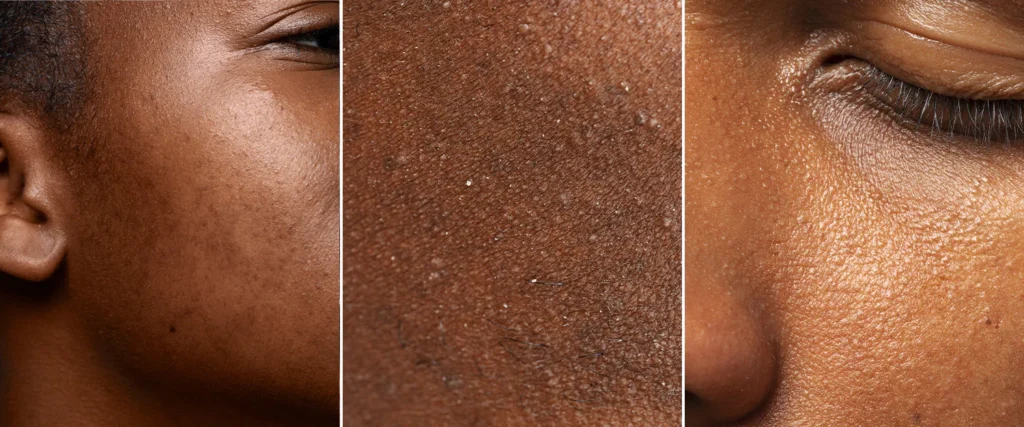
Quick takeaway: once you accurately identify your skin type, product shopping becomes simpler, washing becomes gentler and more effective, and common problems like tightness, itch, rough texture, or redness become easier to manage.
The 5 Main Skin Types (and how to spot them)
Most dermatology frameworks classify skin types into five categories. Think of these as starting points rather than rigid labels:
Normal skin
- Feels comfortable—not tight or greasy—after cleansing.
- Pores are visible but not enlarged.
- Texture is fairly smooth, tone is even, with minimal sensitivity.
Dry skin
- Feels tight after you wash; looks dull or ashy.
- Fine flaking, especially around the nose, cheeks, or hands.
- Prone to rough patches; drinks up moisturizers quickly.
Oily skin
- Shiny across forehead, nose, and chin (T‑zone) or all over.
- Enlarged pores; frequent congestion or breakouts.
- Makeup tends to slide; needs lightweight hydrators.
Combination skin
- Oily T‑zone, dry or normal cheeks and jaw.
- Requires targeted care: balance, not one‑size‑fits‑all products.
Sensitive skin
- Reacts easily to fragrance, dyes, or actives with redness or stinging.
- May be linked to barrier issues, allergy, or chronic conditions (e.g., eczema).
- Needs gentle washing, fewer steps, and diligent moisturization.
Pro tip: Your “type” can shift with seasons, hormones, or medications. Keep an eye on how your skin feels right after washing and 3–4 hours later—those two snapshots tell you a lot about oil, water loss, and sensitivity.
The Skin Type Spectrum: Why you may not fit perfectly in one box
Skin exists on a spectrum: oily ↔ combination ↔ normal ↔ dry ↔ very dry/sensitive. Some days you might feel balanced; others, tight or shiny. That’s normal. Climate swings, stress, lengthy hot showers, frequent hand washing, and new products all push your skin along this spectrum.
- Barrier strength determines whether skin feels smooth or rough, calm or reactive.
- Water content (hydration) and lipid content (natural oils) drive comfort levels.
- Irritants (fragrance, harsh detergents) and allergy triggers (nickel, preservatives) can tip even “normal” skin into sensitivity.
Think of your regimen as adjustable: a notch more moisture in dry months; a notch lighter textures in humid months; extra gentleness when skin is reactive.
Dry Skin 101: Causes, signs, and fixes
Dry skin (xerosis) lacks sufficient oil and often water. It can feel tight after you wash and may look dull, with fine flaking that catches makeup or sunscreen.
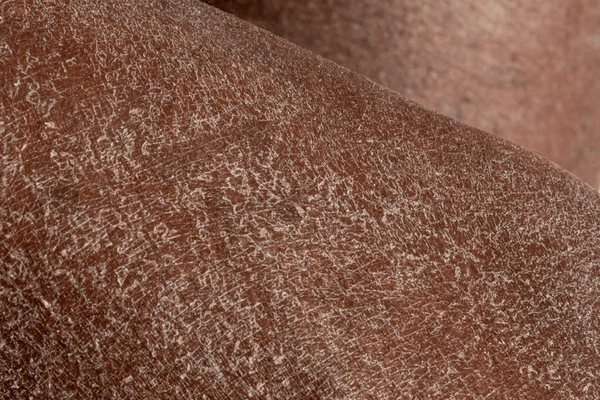
Common causes
- Low humidity, wind, and cold weather
- Over‑cleansing, hot water, and harsh surfactants (sulfates)
- Aging (reduced lipids), genetics, and certain medications
- Fragrance or alcohol‑heavy formulas that strip the barrier
Key signs
- Rough texture and light scaling
- Tightness after washing or showering
- Itch or stinging from fragranced products
- Flaky skin on hands, elbows, or shins
Fixes that work
- Gentle cleanse: Switch to a low‑lather, pH‑balanced cleanser or cream cleanser. Avoid squeaky‑clean feels (that’s stripped barrier). See AAD basics.
- Moisturize on damp skin: Within 60 seconds after you wash, apply a humectant + emollient + occlusive combo (think glycerin + shea butter + oils).
- Seal the barrier: At night, use a richer cream or ointment on rough patches. Cotton gloves over hands can lock in moisture.
- Short, lukewarm showers: Cap at ~5–8 minutes. Avoid hot water.
- Humidify your space: Especially in dry seasons—your skin will feel immediately more smooth and comfortable.
For a gentle cleanse philosophy, see our guide on Why Natural Soap Is Better for Your Skin Health and Environment.
Flaky Skin on Hands: What’s normal, what’s not
Hands take a beating: frequent washing, sanitizer, detergents, paper handling, sun exposure, and temperature swings. Occasional mild flaking can be normal in dry seasons, but persistent flaky skin on hands may signal:
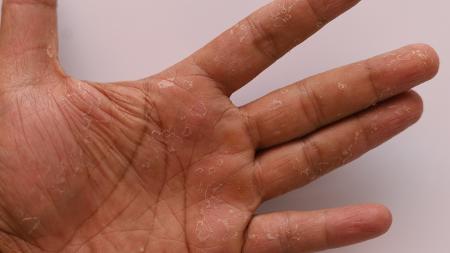
- Irritant contact dermatitis from soaps, alcohol gels, or cleaning agents
- Allergy (allergic contact dermatitis) to fragrances, preservatives, or metals
- Hand eczema (atopic dermatitis) with redness, itch, and fissures
Care steps
- Choose gentler hand washes: Use soap with added moisturizers; avoid strong fragrance. See the CDC’s hand washing guide for technique while keeping the process gentle.
- Moisturize every time you wash: Keep a hand cream at each sink. Look for glycerin, shea butter, colloidal oatmeal, ceramides.
- Protect at work/home: Wear nitrile or vinyl gloves for wet chores; cotton liners reduce sweat irritation.
- Night repair: Apply a thick layer of ointment (petrolatum, lanolin alternatives, or rich butters) and wear cotton gloves.
- When to seek help: If cracks bleed, pain wakes you, or flares persist >2 weeks despite care, see a clinician. NEA has great resources on hand eczema.
For soothing rough patches, see How to Naturally Take Care of Skin Blemishes for barrier‑friendly tips.
Sensitive & Allergy‑Prone Skin: Triggers and soothing strategies
Sensitive skin is reactive; it may sting with acids, tingle with fragrance, or flush with temperature changes. Not everyone with sensitive skin has an allergy, but allergies can drive or worsen sensitivity.
Typical triggers
- Fragrance compounds, essential oils at high concentration
- Certain preservatives (e.g., formaldehyde releasers), dyes
- Nickel in tools or jewelry; rubber accelerators in gloves
- Over‑exfoliation, high‑pH soaps, hot water
Strategies that calm
- Simplify: Fewer products, fewer steps. A gentle cleanser, a barrier‑supporting moisturizer, and sunscreen often suffice.
- Patch test: Before applying new products widely, test on the inner arm for 3–7 days.
- Barrier repair: Look for ceramides, cholesterol, fatty acids, colloidal oatmeal, and panthenol.
- Fragrance‑free: Choose unscented, alcohol‑light formulas.
- Temperature care: Lukewarm water; avoid saunas and steaming on active flare days.
Check out AAD’s sensitive skin basics; NHS pages on contact dermatitis for allergy patterns and testing.
Oily & Combination Skin: Balancing shine with barrier health
If your skin gets shiny by midday, you might over‑wash in hopes of fixing it. Ironically, harsh washing can push more oil production. The aim: remove excess oil without shredding the barrier.
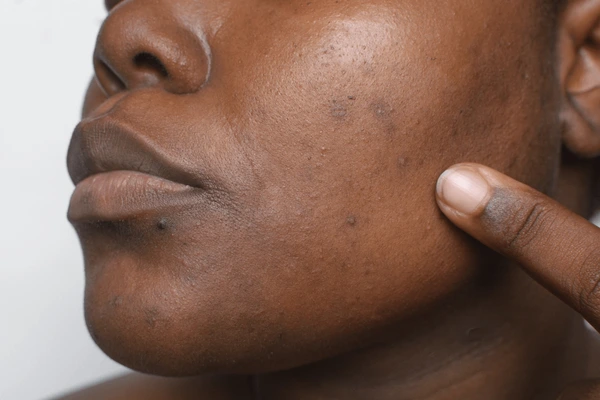
Tips
- Cleanse 2× daily max; use gel or foam cleansers that are sulfate‑free and pH‑balanced.
- Hydrate lightly: Oil‑free or gel‑cream moisturizers keep texture smooth without heaviness.
- Actives: Introduce salicylic acid (BHA) or niacinamide 2–5% to refine pores; pace your actives to avoid sensitivity.
- Combination strategy: Spot‑treat the T‑zone with oil‑control products; use richer creams on dry cheeks or jawline.
If congestion or blackheads are a concern, see Blackheads and Acne: What’s the Connection?.
Smooth vs. Rough Texture: Exfoliation, hydration, and barrier repair
Texture is where many routines go wrong. Too little exfoliation, and skin feels rough; too much, and skin turns sensitive and patchy. The sweet spot depends on your type.
Gentle exfoliation rules
- Frequency: 1–3× weekly depending on tolerance (less for sensitive/dry skin; more for oily/combination).
- Types: Lactic acid and PHA are kinder to dry or fragile barriers; salicylic acid is excellent for oily or clogged areas. Avoid sharp scrubs if you’re sensitive.
- Hydrate after: Always follow with a humectant‑rich toner/serum and a replenishing moisturizer to restore smooth feel.
Barrier‑first approach
- Think of moisturizers as your “texture manager.” Emollients fill in rough edges; occlusives seal water; humectants plump.
- If skin stings with actives, pause actives for a week and rebuild with ceramides and niacinamide.
See The Importance Of Natural Skincare for texture‑friendly habits.
The Right Way to Wash (Face & Hands)
Washing sounds simple, but tiny tweaks matter.
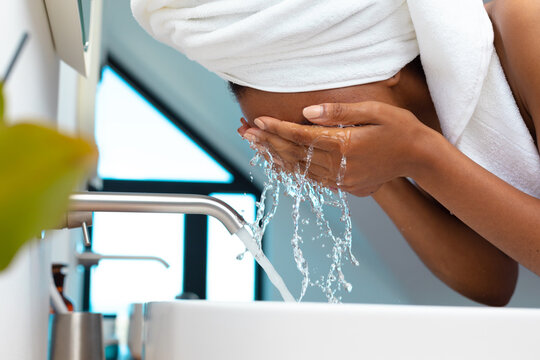
Face washing best practices
- Frequency: Once at night is non‑negotiable to remove sunscreen, dirt, and pollution. In the morning, rinse or use a very gentle cleanse if you’re oily.
- Temperature: Lukewarm—not hot—keeps barriers intact and reduces redness.
- Method: Massage cleanser for 20–30 seconds; don’t scrub hard (friction = irritation).
- Aftercare: Pat dry; moisturize within 60 seconds to trap water in the skin.
Hand washing best practices (to reduce flaky skin on hands)
- Follow CDC’s steps: wet → lather backs of hands, between fingers, under nails → scrub 20 seconds → rinse → dry.
- Switch to gentler soaps at sinks you use most.
- Apply a hand cream right after washing; keep mini tubes in bags and at desks.
- Use sanitizer only when soap and water aren’t available; choose formulas with added humectants.
Avoid
- Very hot water
- High‑fragrance soaps
- Over‑cleansing (especially if dry or sensitive)
Why this works: Washing removes dirt and microbes; moisturizing restores lipids and water. That one‑two punch is what keeps skin smooth instead of rough.
Ingredient Playbook: What to seek, what to skip
Helpful for all skin types
- Humectants: glycerin, hyaluronic acid, urea (lightly), aloe.
- Emollients: shea butter, squalane, triglycerides to reduce rough feel.
- Occlusives: petrolatum alternatives, plant butters or ointments to seal in moisture.
- Barrier repair: ceramides, cholesterol, fatty acids, panthenol, colloidal oatmeal.
If you’re dry
- Seek richer creams with shea butter, ceramides, and urea 5–10% (if tolerated).
- Skip high alcohol content and foamy sulfates that over‑strip.
If you’re oily/combination
- Seek niacinamide, BHA, and lightweight gel‑creams.
- Skip heavy occlusives on the T‑zone; avoid over‑washing.
If you’re sensitive/allergy‑prone
- Seek fragrance‑free, short ingredient lists; panthenol, colloidal oatmeal, madecassoside.
- Skip strong fragrance, high‑concentration essential oils, and common allergy triggers if patch testing shows reactivity.
Use EWG Skin Deep to research individual ingredients and AAD/Mayo Clinic for condition overviews.
Seasonal & Lifestyle Factors
Weather
- Dry/cold seasons: Increase emollients and occlusives; add a humidifier.
- Hot/humid seasons: Switch to lighter textures; focus on sweat management and gentle cleansing.
UV & pollution
- UV can worsen roughness and redness. Pollution deposits need thorough (but gentle) nightly cleansing.
Stress & sleep
- Stress hormones can spike oil and inflammation, increasing sensitivity. Prioritize sleep hygiene—skin repairs overnight.
Diet & hydration
- A varied, fiber‑rich diet and adequate water support skin barrier and microbiome. While no single food “cures” dry skin, balanced nutrition helps.
Work & home habits
- Repetitive wet work (dishes, caregiving) calls for gloves plus post‑wash moisturizers.
- Office AC/heat is drying; keep a desk cream and sip water.
Routine Builder: Step‑by‑step by skin type
Below are simple a.m./p.m. flows. Adjust frequency of actives based on tolerance.
A) Normal Skin
AM
- Rinse or gentle cleanse
- Lightweight moisturizer
PM
- Gentle cleanse
- Moisturizer; occasional serum (hydrating or antioxidant)
B) Dry Skin
AM
- Cream or milk cleanser (or rinse only if not dirty)
- Hydrating serum (glycerin/HA)
- Rich cream to reduce rough patches
PM
- Gentle cleanse
- Barrier cream or ointment over rough areas
- Optional: occlusive layer (e.g., balm) on very dry spots
C) Oily Skin
AM
- Gel/foam cleanser
- Niacinamide serum
- Oil‑free moisturizer
PM
- Cleanse
- BHA 2–3×/week
- Light gel‑cream
D) Combination Skin
AM
- Gentle cleanse
- Targeted moisturizer: light on T‑zone, richer on dry areas
PM
- Cleanse
- Spot BHA on nose/forehead; lactic acid on rough or dry areas (1–2×/week)
- Balancing moisturizer
E) Sensitive/Allergy‑Prone Skin
AM
- Very gentle cleanser or rinse
- Barrier support serum (panthenol/ceramides)
- Fragrance‑free moisturizer
PM
- Gentle cleanse
- Richer barrier cream; avoid potential irritants
- Introduce actives slowly (if at all) and always patch test
For a deeper cleanse philosophy and product selection, see Why Natural Soap Is Better for Your Skin Health and Environment.
FAQs on Skin Types, Washing, and Irritation
Q1: How do I know my skin type for sure?
A: Cleanse at night, skip all products, and observe skin 3–4 hours later and the next morning. If it’s tight and rough, likely dry. If shiny all over, oily. If only the T‑zone shines, combination. If it stings with basic products, sensitive.
Q2: Can I have oily skin that’s dehydrated?
A: Yes. Dehydrated skin lacks water, not oil. You can still feel tight after you wash. Use lightweight humectants plus oil‑free moisturizers.
Q3: What causes flaky skin on hands if I moisturize?
A: Often repetitive washing, sanitizer, detergents, or cold weather. It may also be hand eczema or an allergy. Add gentler soaps, moisturize after every wash, and protect during wet work.
Q4: How often should I exfoliate?
A: Start once weekly; increase only if skin stays comfortable and smooth. Scale back during sensitivity or dry spells.
Q5: Is fragrance always bad?
A: Not for everyone, but it’s a common irritant in sensitive or allergy‑prone skin. If you react, go fragrance‑free.
Q6: Do I need separate products for combination skin?
A: Not necessarily; you can spot‑treat oily zones with oil‑control serums and apply richer cream on dry zones.
Q7: What water temperature should I use to wash my face?
A: Lukewarm. Hot water worsens dryness and redness; cold water won’t dissolve oils well. Lukewarm preserves the barrier and keeps texture more smooth.
Q8: Are natural soaps okay for sensitive skin?
A: Yes—if they’re gentle, fragrance‑free or lightly scented, and pH‑considerate. Always patch test. See our piece on natural soap benefits.
When to see a professional
- Persistent flaky skin on hands that cracks or bleeds
- Worsening itch, rash, or suspected allergy that doesn’t respond to simple changes
- New, rapidly changing, or painful skin lesions
- Severe acne, eczema, or psoriasis impacting daily life
A dermatologist or qualified clinician can run allergy patch testing, prescribe medicated creams, and help you rebuild a sustainable routine.
Final Checklist & Next Steps
Identify your skin type
- Normal • Dry • Oily • Combination • Sensitive
Tune your cleanse
- Wash with a gentle, pH‑balanced cleanser; lukewarm water; no harsh scrubbing.
- For hands, follow CDC technique; moisturize right after washing.
Moisturize like a pro
- Layer humectant + emollient + occlusive to turn rough into smooth.
- Reapply hand cream multiple times daily, especially in dry seasons.
Patch test new things
- Especially if sensitive or allergy‑prone.
Adapt with seasons
- Heavier textures for dry months; lighter for humid periods.
Learn more
